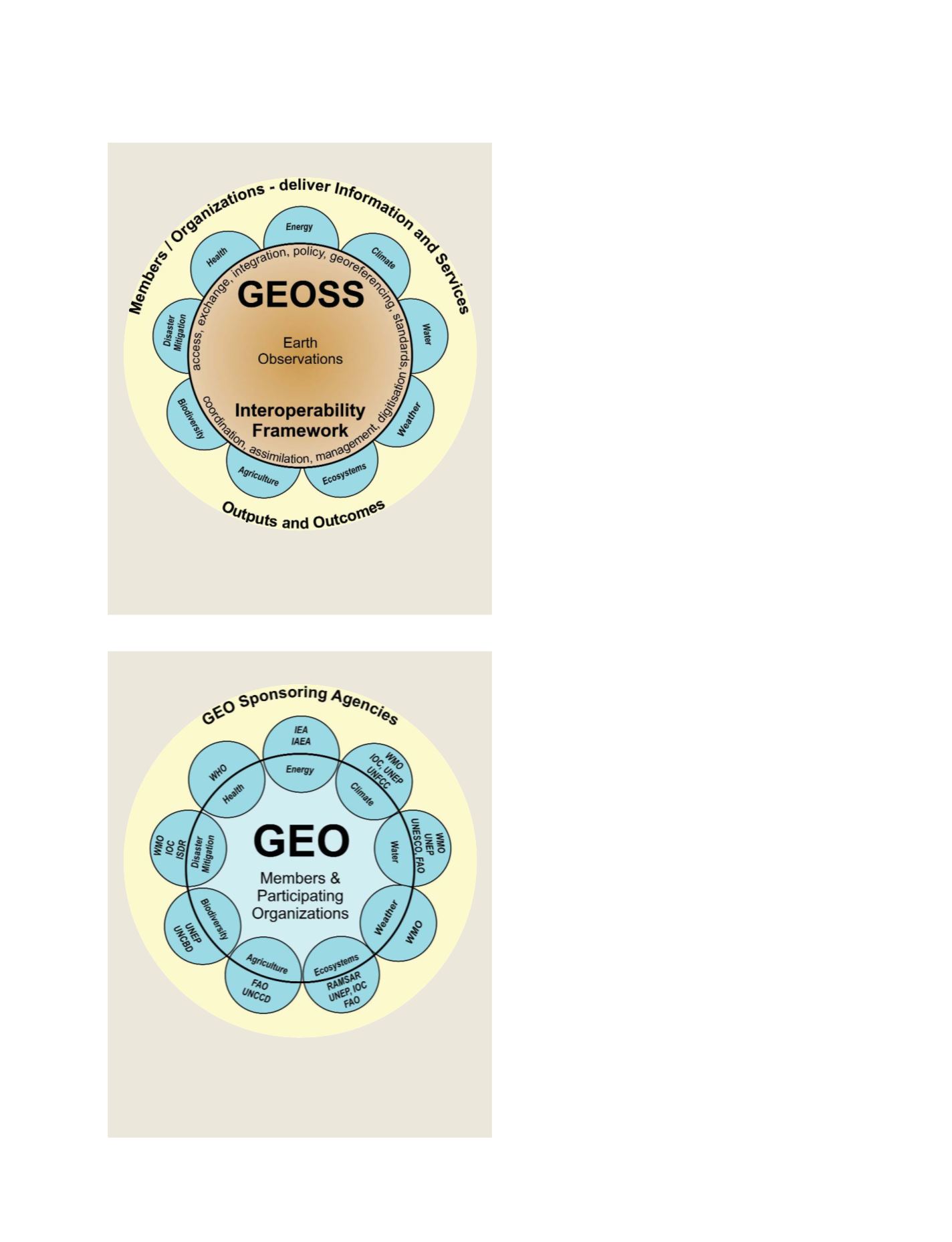

[
] 23
Under the broad umbrella of GEOSS, they will likely
evolve further and deliver even greater benefits to their
members both directly and through GEOSS. The inter-
national programme framework of the WMO World
Weather Watch, for example, provides such a model,
building upon the data sharing policies of WMO
Resolution 40 and an end-to-end service delivery concept.
One option for a sustainable long-term governance
structure is to establish GEO as a joint subsidiary mech-
anism of the multiple high-level UN agencies,
programmes and other designated bodies, such as the
Conventions, that govern the established (and new)
systems or utilize the data to inform regional and inter-
national policy development on global environmental and
related issues. The benefits of such a governance model
include:
• It would have the support and engagement of estab-
lished global organizations and deliver substantial
benefits back to the organizations and their members
• With multiple sponsors, rather that just one or two, no
single one of them would dominate GEO or be able to
indelibly stamp it in their image
• By focusing principally on its value-adding facilitating
role through the GEOSS interoperability framework,
GEO would not challenge the operation and mandate
of the sponsors, which would enable it to exhibit a
considerable degree of operating independence
• Perhaps most importantly, it would minimize the risk
of duplication and competition between GEO and the
international organizations that are responsible for the
established global observing systems.
Many of the relevant UN organizations are already asso-
ciated with GEO and a number of them (WMO, UNEP,
FAO, UNESCO, IOC) are working actively together to
coordinate their participation in GEO and GEOSS.
To some extent, the possible governance model illus-
trated to the left parallels the Intergovernmental Panel on
Climate Change, which is a joint body of the World
Meteorological Organization and United Nations
Environment Programme, but which is seen externally
and is highly respected as a body and authority in its own
right.
With the benefit of a more robust governance frame-
work, GEO could then genuinely focus on its
interoperability and integration role, optimizing its capac-
ity building and outreach activities through synergy with
its sponsoring organizations. Together, GEO and its spon-
sors would represent a truly end-to-end service delivery
concept that would ensure the benefits of coordinated,
comprehensive and sustained global earth system obser-
vations were delivered to all users and communities.
The Ministerial Declaration of the Third Earth
Observation Summit in Brussels (16 February 2005)
resolved to conduct a mid-term assessment of GEO by
2010. This would be a good time to set a process under-
way for transitioning GEO from a multilateral
intergovernmental organization into one that is fully inte-
grated within the UN structure.
GEOSS interoperability framework
The GEOSS interoperability framework will facilitate access, integration and
application of earth observations and related information by members and
participating organizations (and their members) in support of information
and service delivery, research and all manner of decision-making
GEO future governance model
A schematic of a possible future governance model for GEO, in which GEO
is established as a joint subsidiary mechanism of some of the high-level UN
agencies, programmes and other designated bodies that govern or benefit
from the established global systems. Some of the UN bodies that may have
an interest are mapped indicatively against the nine SBAs
N
ATIONAL
& R
EGIONAL
R
EPORTS
















